By Andrea Banda
A&E Editor
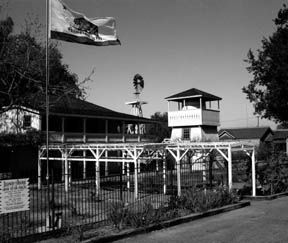 It’s the weekend: Pepperdine students are free from the confines of classes and the monotonous routine of weekly studying — at least for two days. To escape the gated Malibu paradise settled in the hills, they usually head through Malibu Canyon to enjoy their 48 hours of freedom. Most will take the 101 south to the Topanga Mall to hit the sales or head to movie theaters to catch the latest flicks. The Calabasas Commons is a popular stop for Pepperdine students, with its movie theater, Barnes and Noble, Johnny Rocket’s and Coldstone’s. For the many students who frequent the Commons, their weekend journey usually stops there. Little do they know that a block away is Old Town Calabasas, a quaint destination to escape the stress of day-to-day life.
It’s the weekend: Pepperdine students are free from the confines of classes and the monotonous routine of weekly studying — at least for two days. To escape the gated Malibu paradise settled in the hills, they usually head through Malibu Canyon to enjoy their 48 hours of freedom. Most will take the 101 south to the Topanga Mall to hit the sales or head to movie theaters to catch the latest flicks. The Calabasas Commons is a popular stop for Pepperdine students, with its movie theater, Barnes and Noble, Johnny Rocket’s and Coldstone’s. For the many students who frequent the Commons, their weekend journey usually stops there. Little do they know that a block away is Old Town Calabasas, a quaint destination to escape the stress of day-to-day life.
THE LEONIS ADOBE
Old Town Calabasas is a remnant of a significant piece of California history. During the late1800s Miguel Leonis, one of the early pioneers of Los Angeles and the San Fernando Valley, made his home in the heart of what is today Old Town Calabasas. The home, called the Leonis Adobe, dates to 1844, before California became a state. Leonis, also known as “The King of Calabasas,” remodeled the house into a Monterey style mansion, which still stands today.
In 1962 the Leonis Adobe became the first historic cultural monument officially recognized by the city of Los Angeles. It is also entered in the National Register of Historical Places.
The Plummer house has served as the entrance to the museum and the Leonis Adobe since its move to the ranch in 1983. Previously the house was located in Plummer Park, West Hollywood, where according to the Leonis Adobe Association it was known as the “oldest house in 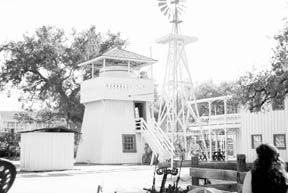 Hollywood.” The historical tie between the two homes was the friendship between the Plummer family and the Leonis family. During the early 1980s the home stood abandoned and vandalized, and the County made plans to destroy it. The Leonis Adobe Association had the front portion of the home moved (the other parts of the home were too severely damaged) to the Calabasas home. The Association then repaired and restored the house to become the entrance to the Leonis Adobe.
Hollywood.” The historical tie between the two homes was the friendship between the Plummer family and the Leonis family. During the early 1980s the home stood abandoned and vandalized, and the County made plans to destroy it. The Leonis Adobe Association had the front portion of the home moved (the other parts of the home were too severely damaged) to the Calabasas home. The Association then repaired and restored the house to become the entrance to the Leonis Adobe.
As you open the gates of the museum, you take a step out of the modern world and enjoy a travel through time to a quaint 1800s California ranch. The paths leading up to the Plummer house are lined with gardens and remnants of a vineyard. Guinea hens freely roam around the grounds and give the home a farm-like ambiance. Upon entering the home, women dressed in colonial attire greet visitors and show them through the museum, with its collection of antiques from the Leonis family. The museum bookstore and gift shop offer Pepperdine students a change of shopping selection from the mall, with its postcards, books and trinkets.
The Leonis Adobe is a two-story home with 10 rooms. Many of the items within the home are originals from the Leonis family, such as the portraits hanging on the walls of the great room, the corner cupboards and the beautiful mirror that covers an entire wall. Antiques from the 1880s are also scattered among the rooms of the house. A Howe sewing machine, early steam iron, sofas and the rugs of the home are all pieces from the same era as when the Leonis family lived on the ranch.
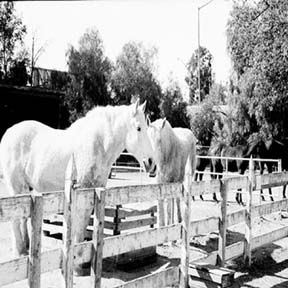 The backyard of the home has a myriad of things to look at. The horses, longhorn cattle, wild turkey, doves and chickens fill the barnyard with noise. The barn, built in 1912, holds a blacksmith shop where children on field trips often are able to make their own cattle brands. Two stagecoaches are stored in the barn with baby chicks.
The backyard of the home has a myriad of things to look at. The horses, longhorn cattle, wild turkey, doves and chickens fill the barnyard with noise. The barn, built in 1912, holds a blacksmith shop where children on field trips often are able to make their own cattle brands. Two stagecoaches are stored in the barn with baby chicks.
The two highlights of the home are the deck on the second floor and the great oak tree in the yard. The deck wraps around the entire front of the house. Jean Lamont, who has worked at the museum for more than 10 years, encourages visitors to “stand on the deck and imagine what Calabasas would have looked like in the 1800s.” Today you will see Calabasas Road and the shops across the street, but many years ago, it was nothing but land. Lamont also said the oldest thing on the ranch grounds is the oak tree, which is 600 years old. Its branches tower over the yard, making visitors seems like miniature people in comparison.
The Leonis Adobe and museum are located at 23537 Calabasas Road and are open Wednesday through Sunday from 1-4 p.m. The historic sites are open to the public through donation.
CALABASAS CREEK PARK
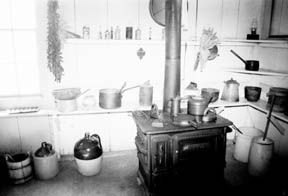 Also part of the original Leonis property, the Calabasas Creek Park is a beautiful garden setting where Pepperdine students and other visitors can escape the confines of reality to enjoy the beauty of nature.
Also part of the original Leonis property, the Calabasas Creek Park is a beautiful garden setting where Pepperdine students and other visitors can escape the confines of reality to enjoy the beauty of nature.
The park is decorated with colorful flowers, plants and trees. A corral of topiaries decorate the park with a variety of shapes and types: an elephant, giraffe and bear from Africa; a goat, horse and pig from the farmyard; a swan, horse and dinosaur from a child’s toy chest.
Strolling through the park you will find yourself huddled in a grove of trees and beautiful greenery. The picnic tables shaded by the tall trees are a great place for a picnic. On the north side of the park mallard ducks swim in the creek. Two bridges provide photo opportunities of nature’s beauty hidden in Calabasas.
SHOPPING & SALONS
In addition to the historic sites of Calabasas, you will also find modern day shops and hair salons. Renewal Spa and Boutique, Old Town Hair Co., Sanford and Merton Clothing, Calabasas Art and Antique and Vernon’s Jewelers are a few of the shops you will find along Calabasas Road.
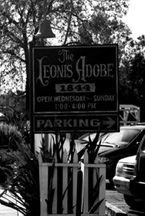 Sanford and Merton Clothing sells women’s clothing and has also dedicated a special section of the store, called “7 Up,” for girls and teens. The store also has vintage gifts, small trinkets, lotions and candles. Another unique aspect of this store is the yarn shop that offers “It’s Hip to Knit” classes.
Sanford and Merton Clothing sells women’s clothing and has also dedicated a special section of the store, called “7 Up,” for girls and teens. The store also has vintage gifts, small trinkets, lotions and candles. Another unique aspect of this store is the yarn shop that offers “It’s Hip to Knit” classes.
Calabasas Art and Antique store sells items ranging from paintings to pianos. Vernon’s Jewelers buys, sells and repairs pieces.
The northernmost store along the street is Net Results, a tennis store that sells equipment and products for tennis players.
The highlight of the shopping in Old Town Calabasas happens on Saturday from 8 a.m. to 1 p.m. as the year-round “Farmers’ Market” fills an area of the town with people selling fresh fruit and vegetables.
RESTAURANTS
Between the Leonis Adobe and the park is a restaurant called the Sagebrush Cantina. In the entrance of the establishment is a model train built by Delaware and Hudson Railroad to one-third the scale of the Locomotive numbers 651, 652 and 653, which were the most powerful locomotives ever built.
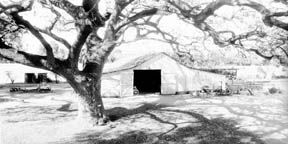 When walking by the restaurant from the Leonis House you will see the large outdoor patio where many people choose to enjoy the California sun with their meal. The menu ranges from seafood to Mexican and has what the management calls “a little bit of everything.”
When walking by the restaurant from the Leonis House you will see the large outdoor patio where many people choose to enjoy the California sun with their meal. The menu ranges from seafood to Mexican and has what the management calls “a little bit of everything.”
Two popular features of this restaurant are its live music on weekend evenings on the outdoor patio and its Sunday brunch from 10 a.m. to 2 p.m.
Fins Creekside, Banzai Sushi and Gaetano’s Ristorante and Wine Cellar are also located along this historic district. Fins specializes in seafood entrees with prices from $12-$30. Banzai Sushi offers a casual environment to enjoy traditional Japanese food. Gaetano’s Italian offers lunch and dinner with entrees ranging from $12-$19.
A LITTLE BIT OF THIS AND THAT
In between the shops and restaurants along the west side of Calabasas Road are miscellaneous places to visit. The Calabasas Junction building is now the home of Paramount Rodeo Realty. Further along the block you will find a dry cleaners, law offices and the Calabasas Chamber of Commerce. The mixture of establishments proves that people can mix business with pleasure.
Whether Pepperdine students are looking for a little adventure not too far from campus, a new weekend hangout to eat and play or a new place to study, Old Town Calabasas can satisfy all of these interests. Its history, shops and restaurants are the perfect escape to an early California town when life was simple.
Directions
-Take 101 South to the Mulholland exit.
-Turn right onto Calabasas Road.
-Parking is on the right side of the street for most establishments.
March 13, 2003

